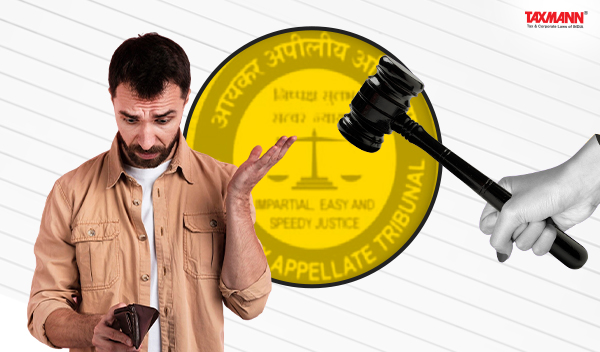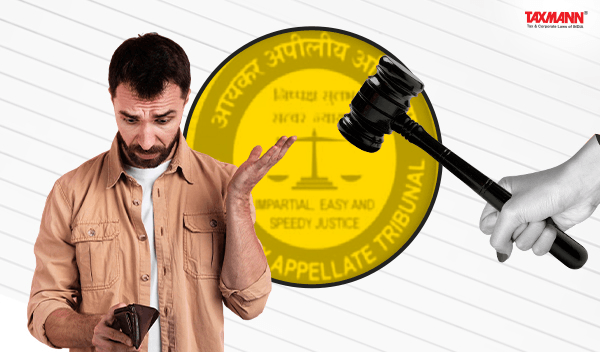
Case Details: Clestra Foundation vs. ITO - [2024] 169 taxmann.com 46 (Bangalore-Trib.)
Judiciary and Counsel Details
- Ramit Kochar, Accountant Member & Keshav Dubey, Judicial member
- Ravindra T., A.R. for the Appellant.
- Ganesh R. Ghale, Standing Counsel for the Respondent.
Facts of the Case
The assessee, a private trust, e-filed its return of income for the relevant assessment year, declaring total income of Rs. 40 lakhs. The assessee’s income consisted of interest income and dividend income from domestic companies. The assessee calculated the surcharge at 37 per cent on the tax on interest income only and not on dividend income on the ground that the surcharge was not applicable for income below Rs. 50 lakhs, whereas the CPC calculated the surcharge at the rate of 37 per cent on total tax, while processing the return under section 143(1) and accordingly computed the balance demand payable.
On appeal, the CIT(A) was of the view that the taxation of surcharge on dividend income also required to be taxed at the rate of 37 per cent in view of provisions of section 2(29C) and other relevant provisions and the action of Assessing Officer (AO) of charging the surcharge at the rate of 37 per cent on dividend income was confirmed.
Aggrieved by the order, an appeal was filed to the Bangalore Tribunal.
ITAT Held
The Tribunal held that the instant appeal was an undisputed fact that the assessee was a private trust and, therefore, should be taxed at the maximum marginal rate. There was no dispute with regard to the total income declared by the assessee in its return of Income. It was also an undisputed fact that the assessee had calculated the maximum marginal rate by applying the Income tax rate applicable to the highest slab of income in the case of an Individual/AOP/BOI. Further, the assessee himself calculated the surcharge in relation to the highest slab of Income on Interest Income only. The sole dispute was whether MMR included a surcharge in relation to the highest slab even though the assessee’s income was way below 50 Lakhs.
From the plain reading of section 2(29C), the expression “Maximum Marginal Rate” is the rate of income tax (including a surcharge on income tax, if any) applicable in relation to the highest slab of income in case of an individual, AOP or BOI as specified in the Finance Act of the relevant year. It is also noted that “including a surcharge on income tax, if any” has been put in a pair of marks (), which indicates that the text within them is conditional, i.e. the bracketed information only applies if certain conditions are met as often seen with phrases like “if any”. The inclusion of a surcharge, if any, implies that this amount is contingent upon the surcharge in relation to the highest slab of income as specified in the Finance Act of the relevant year.
The view taken by the Commissioner (Appeals) that the Finance Act of every year was only relevant to know the highest slab of the rate of tax and surcharge was agreeable. The word “if any” in section 2(29C) is relevant if the surcharge to the highest slab of income is mentioned in the relevant Finance Act and it will be applicable for a particular assessment year.
Here, the word “surcharge, if any” is relevant to the levy of surcharge, if mentioned in the Finance Act. If the surcharge of the highest slab is mentioned in the Finance Act, then the surcharge will be included in the tax, and MMR will be calculated accordingly. If no surcharge is mentioned in the schedule of the Finance Act, then no surcharge will be included in the tax quantum for calculating the MMR.
This word does not remedially suggest including a surcharge in MMR as per different slab rates of income. The information enclosed with a pair of brackets can be removed from a sentence and still make sense, as they are mostly just extra information. Therefore, if a surcharge is not specified in the Finance Act, then it will not be a part of the maximum marginal rate, and only income tax rate in relation to the highest slab of income will be considered.
Accordingly, the order of the Commissioner (Appeals) holding that Maximum Marginal Rate was correctly computed by the CPC, taking the rate of income tax and surcharge applicable in relation to the highest slab of income in case of individual/AOP/BOI for the assessment year under consideration was confirmed.
List of Cases Reviewed
- Anant Bajaj Trust v. Dy. Director of Income Tax, CPC ITA No.1995/Mum/2024 (Para 5.4)
- Aaradhya Jain Trust v. ITO ITA No.2197/Mum/2024 (Para 5.4) Followed.
List of Cases Referred to
- ITO v. Tayal Sales Corporation [2003] 1 SOT 579 (Hyderabad) (para 4.1)
- ITO v. Tayal Sales Corporation [2003] 1 SOT 579 (Hyderabad) (para 5.4)
- Anant Bajaj Trust v. Dy. DIT ITA No.1995/Mum/2024 (para 5.2)
- ITO v. Tayal Sales Corporation ITA No.2197/Mum/2024 (para 5.4)
- Sriram Trust, Hyderabad v. ITO (Exemptions) ITA No.439 (para 5.4)
The post MMR Includes Surcharge for Highest Income Slab Despite Assessee’s Income Being Below Rs. 50 Lakhs | ITAT appeared first on Taxmann Blog.
